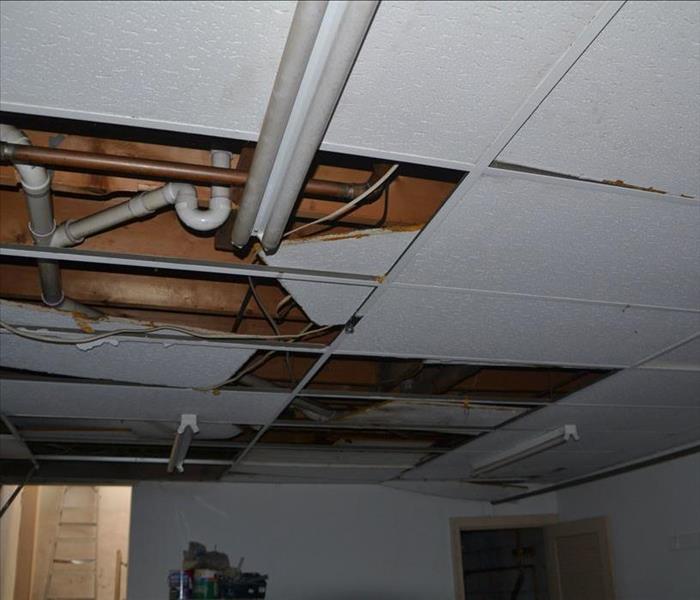Proper Drying Techniques in Commercial Property Damage Restoration
10/10/2023 (Permalink)
Key Takeaways:
- Proper drying techniques are essential in commercial property damage restoration
- Quick action is necessary to minimize the damage caused by water
- Using professional services like SERVPRO can ensure proper restoration
- Document restoration is a critical aspect of commercial damage restoration
Water damage is a common problem that can affect any commercial property, regardless of size or location. From burst pipes to natural disasters, water damage can occur suddenly and without warning, leading to costly and time-consuming repairs. Proper drying techniques are crucial in commercial property damage restoration to prevent further damage and minimize costs. In this article, we’ll discuss the best practices for efficient dry-out processes from experienced property managers and commercial contractors.
Identify the Cause of Water Damage
The first step in properly drying out a commercial property is to identify the source of the water damage. Whether it’s a burst pipe, a leaking roof, or a natural disaster, it’s crucial to address the cause of the damage before beginning the dry-out process. If the source of the damage is not fixed, the problem will continue to worsen, leading to more extensive and expensive repairs. Experienced commercial contractors like SERVPRO of South and Northwest Grand Rapids can help you identify and fix the source of the water damage before beginning the drying process.
Remove Standing Water
The next step in properly drying out a commercial property is to remove any standing water. The longer water is left standing, the more damage it can cause. Standing water can seep into carpets, walls, and other building materials, leading to structural damage and mold growth. Commercial contractors will use specialized equipment, such as pumps and vacuums, to remove standing water quickly and efficiently.
Dry Out Affected Areas
Once standing water has been removed, the affected areas must be dried out. This process involves removing any moisture from carpets, walls, and other building materials to prevent mold growth and structural damage. Commercial contractors use specialized equipment, such as dehumidifiers and air movers, to dry out affected areas quickly and efficiently.
Monitor Drying Progress
It’s essential to monitor the drying progress regularly to ensure that the affected areas are drying out properly. Commercial contractors use specialized moisture meters to measure the moisture content of carpets, walls, and other building materials. This process helps them determine if the affected areas are drying out as expected and make adjustments to the drying process if necessary.
Document Restoration
In addition to structural damage, water damage can also affect important documents, such as contracts, invoices, and legal documents. Commercial contractors can help you with document restoration by using specialized techniques, such as freeze-drying and vacuum-freeze-drying. These techniques can help salvage damaged documents and prevent further damage.
Final Thoughts
Proper drying techniques are crucial in commercial property damage restoration to prevent further damage and minimize costs. By following best practices for efficient dry-out processes from experienced property managers and commercial contractors, you can restore both property and profits. If you need help with water damage restoration, contact SERVPRO of South and Northwest Grand Rapids today. Our experienced team is available 24/7 to provide emergency services and help you get back to business as usual.




 24/7 Emergency Service
24/7 Emergency Service
